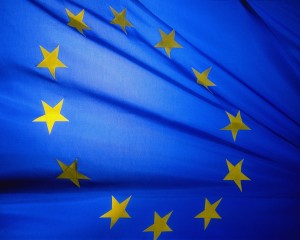In Russia, Putin has established a kleptocracy, a regime which allows the elites to plunder the country and its people (Granville 2003, The Guardian 2010, Bobinski 2014 ), and it is this system as much as other national interests and ambitions that Russia is now defending (see for e.g. Dawishe 2011). In Ukraine, ex-president Yanukovych established a similar regime; over 70 per cent of Ukrainians, over 80 per cent in western Ukraine, believe that ‘there is a lot of corruption in Ukraine’ (Düvell et al. 2013). This has held back modernisation and productivity and negatively impacted on living standards and life satisfaction (ibid.).
In behaviourist theory migration is understood as an ‘exit strategy’ to escape dissatisfying conditions; in contrast, protest is a ‘voice strategy’ to change dissatisfying conditions (see Hirschman 1970). The third option is either loyalty or silently putting up with the given conditions. In our Eumagine project conducted before the crisis from 2011 to 2013, we found that 49.3 per cent of our survey respondents had an aspiration to migrate (Bilan et al. 2012). This was driven by overall low levels of life dissatisfaction, dissatisfaction with economic opportunities, alienation from the political class, dissatisfaction with public services (notably the health sector) and endemic corruption. Since 1991, the year of Ukraine’s independence, the country has lost 7 million of its population; this is partly due to emigration and partly to natural population decline. It is assumed that 3-7 million Ukrainians – no one knows the exact number - are engaged in temporary or permanent migration.
In 2004, and again in 2013/14, people also turned to protest. The 2004 ‘Orange Revolution’ (see Karatnycky 2005), failed, however; initial success was frustrated by egomaniacal leaders (Yushchenko and Tymoshenko), and then reversed by Yanukovych after the fraudulent 2010 elections. In less than four years, he and his followers have ruined the country and its budget and alienated large parts of its people. The latest uprising, in November 2013, was triggered by Yanukovych’s refusal to sign an Association Agreement and a Free Trade Agreement with the European Union, and has become known as the ‘EuroMaidan’ (Maidan=square) movement. This reference to Europe demonstrates that the uprising is inspired by the wish to transform the country according to values and practices identified with ‘Europe’, notably democracy, stability, rule of law and accountability. It could be assumed that, at least in some parts of the population, this has raised hopes for improvements which in turn could diminish migration aspirations. In our project, people explained that if matters improved, they would no longer want to migrate.
Migration scenarios
At the outset it should be noted that Ukraine is not any distant country, but borders four EU member states, Poland, Slovakia, Hungary and Romania, and is within driving distance, meaning that it takes less than 14 hours or so to reach many others such as Germany, Austria, Italy and others. In addition, hundreds of bus and mini bus lines, not to mention airlines, including low budget carriers, link most parts of Ukraine to many EU member states.
(1) So one scenario would be that the current conflict with Russia will be resolved soon, that there is a flow of western aid, and that governance and economics improve, that people become confident with the development of Ukraine, that migration aspirations decrease, and even that Ukrainians who are currently abroad might consider returning (and, last but not least, contributing to social transformation). This, however, seems the most optimistic and least realistic scenario.
(2) Another scenario could be that Ukraine experiences a prolonged economic crisis, further deepened by an austerity policy as the likely condition for IMF and EU loans. In this case, large parts of the population would be thrown into relative or absolute poverty, and migration aspirations would be likely to increase significantly. This could mean that maybe three quarters of the working age population would want to migrate to work abroad.
(3) In the case that a pro-Russian regime is reinstalled in Kiev, we might also see those who lead or sympathise with the revolution leaving for the EU, either as migrants or indeed as refugees. Notably the young and well-educated revolutionaries will leave, just as they did after 2004/2010; the majority won't have this option, however, as they lack the preconditions and would rather stay albeit alienated from the regime.
(4) A third scenario is related to the unfolding violent internal ethnic conflict and even to military intervention by Russia. In this case, some parts of the Russian-speaking population would want or need to escape, first to eastern Ukraine, and some would go to Russia (many have family there). Ukrainian-speakers, on the other hand, would want or need to move to western Ukraine, while some would continue to traditional destinations in the EU, such as Poland, Germany, Italy, Netherlands and Belgium. (In the past Spain, Portugal and Greece were major destinations, but no longer.) These movements would be large-scale, and a mix of refugees and economic migrants, if in this context such a distinction would make sense at all.
(5) A separate population of concern are the 250,000-300,000 ethnic Tatars on Crimea. They were deported and partly extinguished under the Tsars and Stalin and therefore reject coming under Russian ruling again. They already face racial discrimination and threats and might be forced to leave their homelands once again (UNPO 2013).
(6) Currently, about 1 million Schengen visas are issued annually to Ukrainians, mostly by Poland. Under the given conditions, i.e. visa requirements, few of the people who would want or have to migrate would be able to turn to regular migration channels. In recent years, the Ukrainian Border Guard Service has made a concerted effort to prevent clandestine border crossings. But in the case of further turmoil, violence, or Russian intervention, they could let down controls, and EU forces are unlikely to unilaterally effectively control the EU’s external borders. In any case, irregular migration is likely to increase considerably.
 (7) So far, around half of all Ukrainian migrants have gone to Russia, mostly the less well educated and Russian speakers, often from eastern Ukraine. But Russia has already threatened (in summer 2013) to introduce visa requirements to Ukrainians in order to undermine the country’s alignment with the EU and to bring it back under Russian control. Under current conditions Russia might reconsider using this diplomatic weapon. In particular, Russian-speaking easterners would find it difficult to move west instead, as many don't have the same level of language skills (like Polish or German) or networks/access to information. This would deprive millions of Ukrainians of their source of income and would reduce the flow of remittances which would be a severe blow to the Ukrainian economy and society. But Russia could also try to limit the visa weapon to ethic Ukrainians/Ukrainian speakers (see next argument). In any case, this would further increase the pressure for migration to the EU.
(7) So far, around half of all Ukrainian migrants have gone to Russia, mostly the less well educated and Russian speakers, often from eastern Ukraine. But Russia has already threatened (in summer 2013) to introduce visa requirements to Ukrainians in order to undermine the country’s alignment with the EU and to bring it back under Russian control. Under current conditions Russia might reconsider using this diplomatic weapon. In particular, Russian-speaking easterners would find it difficult to move west instead, as many don't have the same level of language skills (like Polish or German) or networks/access to information. This would deprive millions of Ukrainians of their source of income and would reduce the flow of remittances which would be a severe blow to the Ukrainian economy and society. But Russia could also try to limit the visa weapon to ethic Ukrainians/Ukrainian speakers (see next argument). In any case, this would further increase the pressure for migration to the EU.
(8) Finally, Russia is already giving out Russian passports to ethnic Russian Ukrainians, first in Crimea and then in southern and eastern Ukraine, although dual citizenship is not permitted under Ukrainian law. On the one hand, this undermines ethnic Russians’ loyalty to Ukraine; on the other, it could facilitate travel and migration to Russia, while excluding ethnic Ukrainians.
Conclusion
In the years to come, migration pressure from Ukraine is more likely to increase than not, resulting in migration, irregular migration and in the worst case even refugee flows. The EU and its member states might soon find themselves in a position where they need to deal with increased migration or even refugee flows from Ukraine. On 5 March the Commission of the European Union (2014) agreed a package in support of Ukraine that also encompasses ‘Acceleration of Visa Liberalisation [and to] …offer a Mobility Partnership’. Germany, in particular, with its hunger for skills and workers might want to consider letting in more Ukrainians. This might actually not be too unpopular a move as recent surveys have shown that 73 per cent of Germans are in favour of admitting Ukraine to the EU, and 40 per cent even suggest that this could happen soon (Der Spiegel 2013). Also Poland, a historical ally of Ukraine, already implements a liberal entry system: of the one million Schengen visa issued annually to Ukrainians two thirds are issued by Poland. If the EU wishes to go beyond cheque book diplomacy and support Ukraine and its economy, society and people in a more comprehensive manner, then it would need to also consider further liberalising current visa requirements, employment restrictions, and a migration and development strategy.
